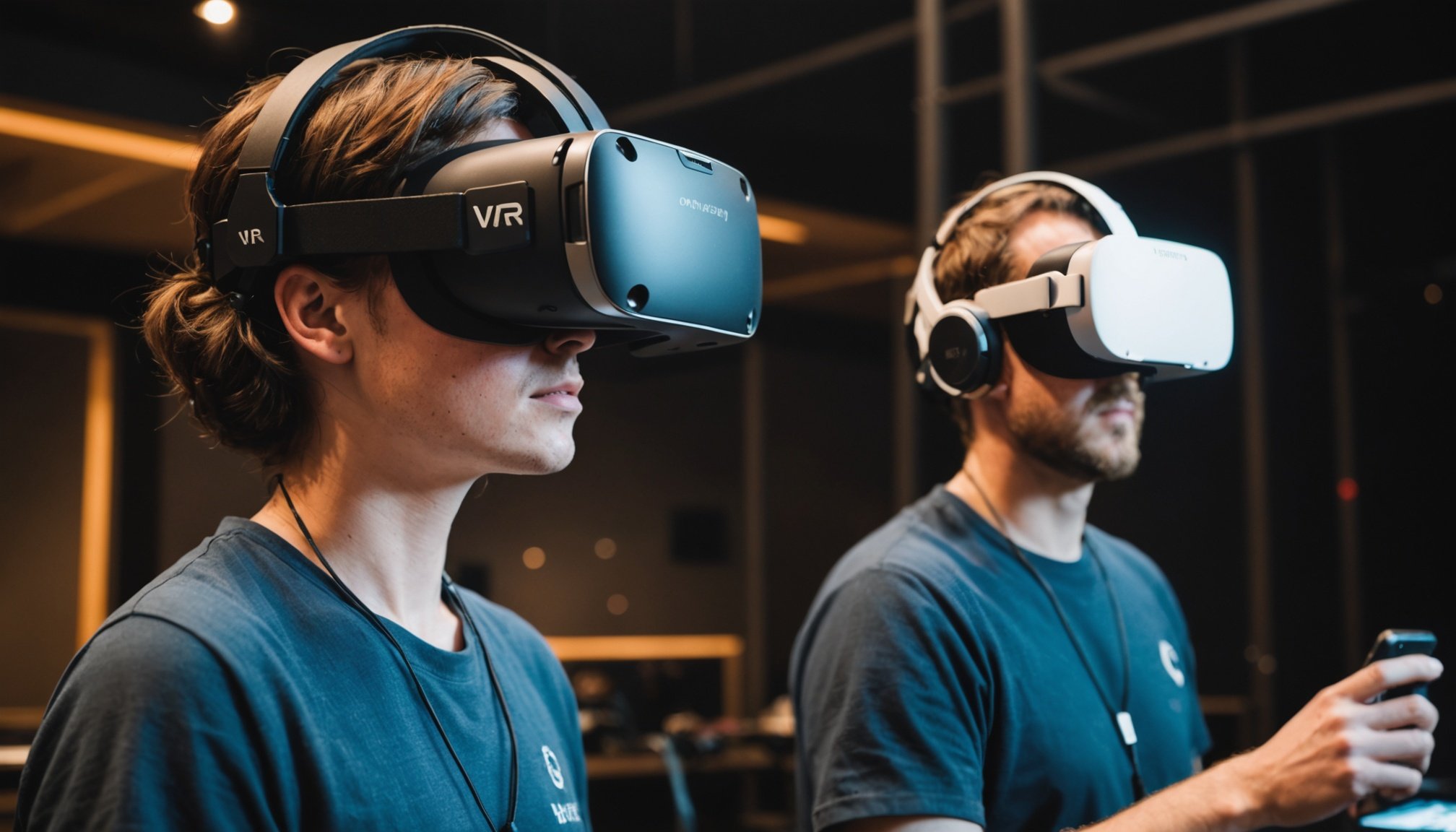Technical Challenges in Next-Gen VR Multiplayer Development
The development of next-gen VR multiplayer environments isn’t without its challenges. One significant issue is network latency, which directly impacts user experience. In VR multiplayer scenarios, even minor latency can result in disorientation, reducing immersion. This is a major obstacle because, in VR, every millisecond matters. Users expect seamless interactions, and achieving this requires robust network infrastructure capable of minimizing delays.
Another pressing concern is scalability. As more players join a VR environment, maintaining performance becomes complex. More users mean more data to be processed simultaneously, and this dramatically increases the load on servers. Scalability ensures that a game can handle a growing number of participants without compromising on quality or speed.
This might interest you : Unlocking Ultra-Realistic Character Textures: Techniques for Next-Gen Video Games
To address these challenges, developers are exploring innovative technical solutions. These include using optimized data compression techniques to reduce bandwidth usage and implementing cutting-edge algorithms for quicker data processing. Additionally, developers are investing in dedicated servers designed to increase reliability and accommodate the demands of large-scale multiplayer environments. The overarching goal is to enhance both performance and reliability, ensuring a smoother and more engaging VR experience for players worldwide.
Social Interaction Dynamics in Multiplayer VR
The importance of fostering player interaction and community in multiplayer VR experiences cannot be overstated. As players step into these virtual realms, the social aspect often determines player engagement and the overall user experience. Game developers and designers face the challenge of crafting environments that aren’t just visually appealing but also facilitate natural and immersive interactions.
Also to discover : Unlocking Realism: Essential Elements for Crafting Authentic Damage Models in Racing Simulations
Analyzing user experience design in engaging multiplayer environments provides insights into developing spaces that enable meaningful social interaction. This involves careful attention to avatars’ expressions, gestures, and the incorporation of realistic audio cues to create a sense of presence. These elements can make players feel connected, enhancing their engagement.
Methods to enhance communication within these spaces are vital in promoting social interaction. Enhancing social presence can be achieved by integrating:
- Voice and text chat options for seamless communication
- In-game events that encourage group participation
- Arenas or missions necessitating teamwork
These methods ensure players remain engaged, thus contributing to a vibrant community. As VR technology advances, improving these interaction dynamics becomes not just about technology, but also understanding human social behaviour, making settings that attract and retain users through enriched, shared experiences.
Design Considerations for Next-Gen VR Platforms
When designing the next generation of VR platforms, attention to VR Design and User Interface is paramount. Platforms should focus on creating intuitive user experiences. An interface that users can navigate easily increases engagement and reduces frustration.
Creating Intuitive User Interfaces
An intuitive user interface in VR design prioritizes usability. This involves creating interfaces that feel natural and allow for seamless interaction. Key aspects include minimalistic design elements and straightforward controls, helping users to operate without extensive instructions. Using motion controls or voice commands can further bolster accessibility, contributing to a more intuitive experience.
Ensuring Immersive Environments
Ensuring immersive experiences is essential to draw users deeper into VR environments. Techniques such as realistic graphics, spatial audio, and haptic feedback enhance immersion. For developers, understanding user expectations for sensory engagement can guide effective environment building. The result is an experience that feels more realistic and captivating.
Balancing Game Mechanics with User Experience
Balancing game mechanics with user experience is crucial for VR platforms. Designers must align mechanics with player expectations to avoid breaking immersion. Strategies include incorporating natural gameplay actions that mirror real-world behaviours, ensuring the mechanics support rather than distract from, the immersive experience. This alignment enhances player satisfaction and sustains engagement within VR worlds.
Case Studies and Best Practices
Delving into multiplayer VR games, case studies illuminate what truly makes a title successful. Games like “Rec Room” and “VRChat” have mastered the art of immersive social interaction by pioneering features such as user-generated content and cross-platform play. These features not only keep players engaged but also ensure a diverse and ever-evolving gaming environment. The strategic approach of integrating social elements seamlessly has set a benchmark for others in the industry.
Industry insights further enrich the understanding of what it takes to thrive. Experts highlight the significance of robust backend systems in handling numerous simultaneous players. Ensuring low-latency connections and scalable server infrastructure reduces common barriers to seamless multiplayer experiences. Overcoming these challenges is critical to maintaining immersion and player satisfaction.
When it comes to best practices, developers are encouraged to focus on intuitive user interfaces and optimised experiences for all participants. Crafting an accessible tutorial system ensures players of all skill levels can engage without frustration. Moreover, maintaining open channels for player feedback and implementing swift updates based on this feedback fosters a community-driven improvement approach. Embracing these techniques not only enhances player loyalty but also propels the development of pioneering VR experiences.
Future of Multiplayer Experiences in VR
The world of multiplayer VR is constantly evolving, with future trends indicating a shift towards more immersive and realistic experiences. As technology progresses, we can expect emerging technologies like 5G and AI to enhance VR environments significantly. These advancements will likely reduce latency, providing smoother and more immediate interactions for users.
VR Innovations such as haptic feedback suits and advanced hand-tracking sensors promise to deepen the sense of presence in virtual worlds, making them feel more tangible and interactive. Players will not only see and hear the virtual environment but also physically feel it, creating a more engaging gaming experience.
Social interactions in these multiplayer VR landscapes are set to become more sophisticated as well. With the integration of facial recognition and more expressive avatars, players can communicate more naturally, mirroring real-world interactions. These inventions will foster stronger connections and collaborations among players.
Imagine a future where virtual items and achievements are shared seamlessly across platforms, creating a unified and open-ended gaming experience. As these VR innovations continue to unfold, they will redefine how players connect, collaborate, and compete in virtual arenas.










